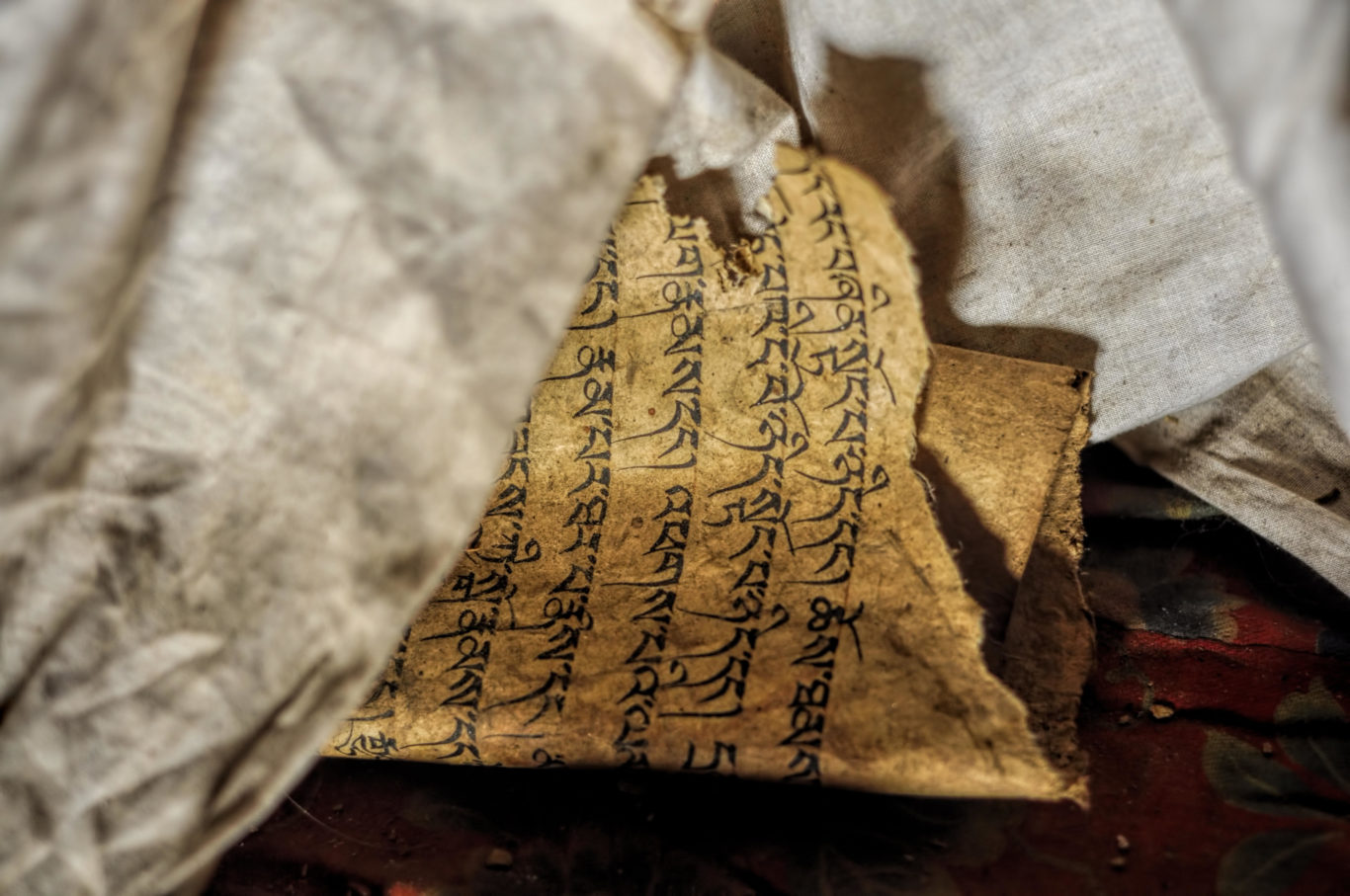Is there a Buddhist Bible?

The Tibetan canon of Buddhist texts, pictured here, is just one of the many bodies of text considered authoritative by different Buddhist communities around the world. | Michal Knitl / Alamy Stock Photo
Since Buddhism is really a family of religions rather than a single spiritual system, there isn’t one single set of scriptures considered authoritative by all Buddhist groups. Each Buddhist tradition follows its own scriptural “canon” (collection of foundational texts) and has produced a mountain of commentary and teachings based on those canons.
Theravada Buddhists root their practices in the Pali canon, which includes some of the earliest-dated Buddhist texts, recorded in an ancient Indian language called Pali. These scriptures are known as the Tipitaka (“Three Baskets”) because they include three major groups of texts. The “Sutta Pitaka” contains the suttas (Sanskrit, sutras) or recorded discourses of the Buddha and some of his disciples; the “Vinaya Pitaka” contains the Buddha’s code of discipline for his monastic community; and the “Abhidhamma Pitaka” contains a detailed analysis of the nature, origin, and interaction of material and psychological phenomena. Scholars generally date this last group of texts to a few hundred years after the Buddha’s death, perhaps between the third and first century BCE.
The Chinese canon, the body of scriptures that is considered authoritative by East Asian Buddhist traditions (including Japanese, Korean, and Vietnamese), was likely recorded between the first century BCE and the fifth century CE. There’s plenty of overlap between the Chinese and Pali canons (for instance, the Chinese canon contains a version of the suttas, the Buddha’s discourses, known as the agamas), but they part in crucial doctrinal ways, too. The Tibetan canon, split into the Kangyur (what’s considered the word of the Buddha) and the Tengyur (later commentaries), also overlaps with the Chinese canon and contains its own unique scriptures, including the tantra texts.
Some other schools of Buddhism base their practices and doctrines on specific sutras or treatises. Nichiren Buddhism, for instance, is founded on a scripture known as the Lotus Sutra, and chanting the sutra’s title is a principal part of the practice. Pure Land Buddhists, meanwhile, study three sutras that concentrate on a buddha known as Amitabha, or the Buddha of Infinite Light, who is said to reign over the “pure land,” a kind of Buddhist heaven where conditions for attaining enlightenment are favorable.

Tricycle is more than a magazine
Gain access to the best in sprititual film, our growing collection of e-books, and monthly talks, plus our 25-year archive
Subscribe now